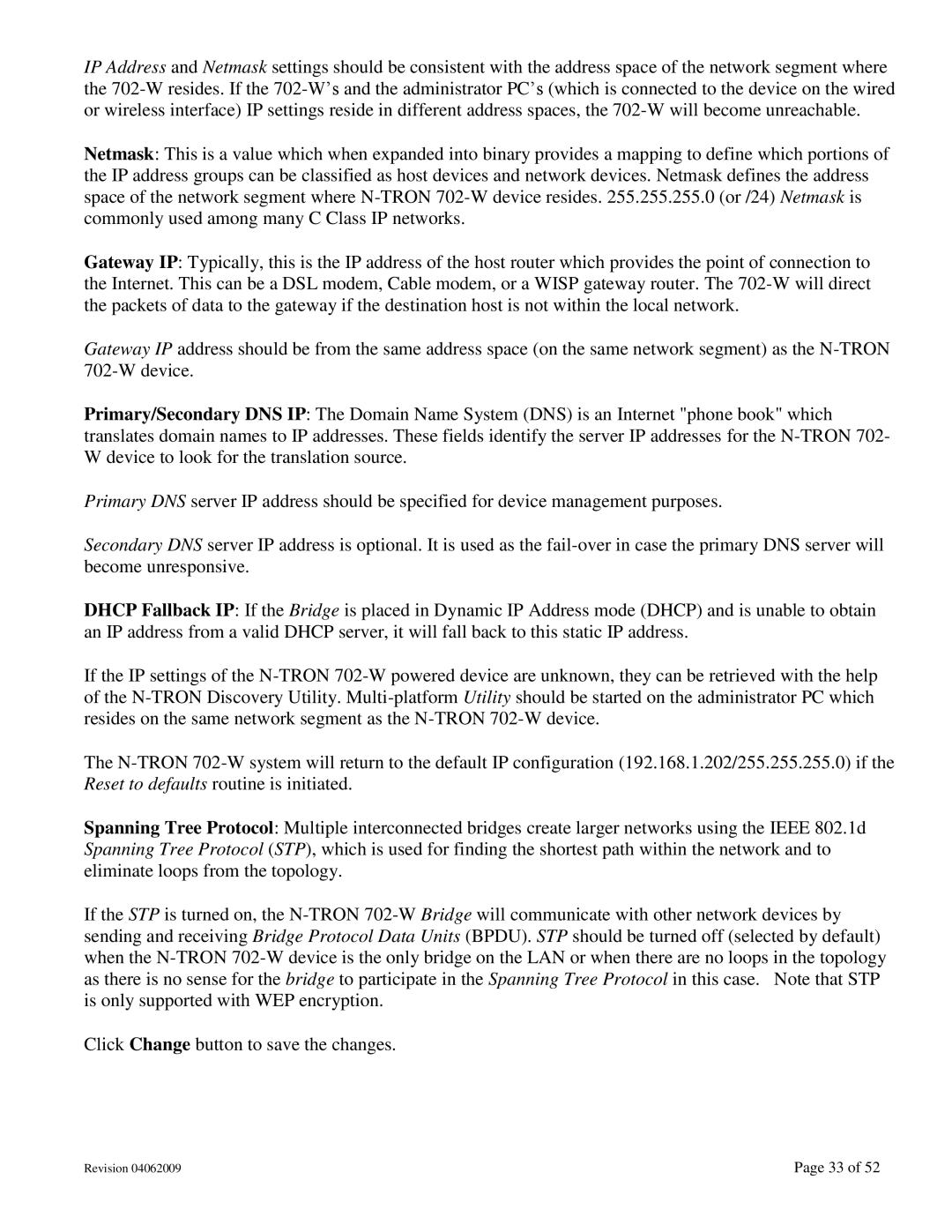IP Address and Netmask settings should be consistent with the address space of the network segment where the
Netmask: This is a value which when expanded into binary provides a mapping to define which portions of the IP address groups can be classified as host devices and network devices. Netmask defines the address space of the network segment where
Gateway IP: Typically, this is the IP address of the host router which provides the point of connection to the Internet. This can be a DSL modem, Cable modem, or a WISP gateway router. The
Gateway IP address should be from the same address space (on the same network segment) as the
Primary/Secondary DNS IP: The Domain Name System (DNS) is an Internet "phone book" which translates domain names to IP addresses. These fields identify the server IP addresses for the
Primary DNS server IP address should be specified for device management purposes.
Secondary DNS server IP address is optional. It is used as the
DHCP Fallback IP: If the Bridge is placed in Dynamic IP Address mode (DHCP) and is unable to obtain an IP address from a valid DHCP server, it will fall back to this static IP address.
If the IP settings of the
The
Spanning Tree Protocol: Multiple interconnected bridges create larger networks using the IEEE 802.1d Spanning Tree Protocol (STP), which is used for finding the shortest path within the network and to eliminate loops from the topology.
If the STP is turned on, the
Click Change button to save the changes.
Revision 04062009 | Page 33 of 52 |
